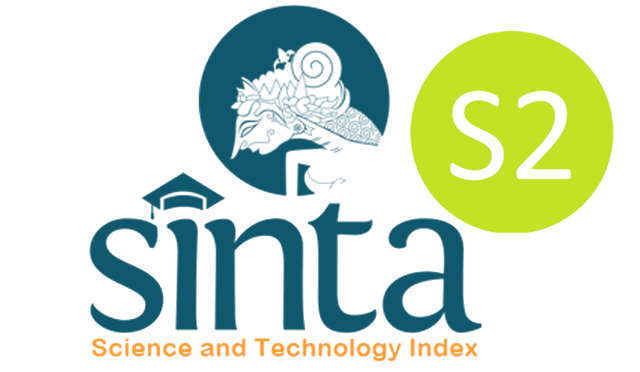Cultural Representation of Babukung Dance Funeral Ceremony Ritual of The Dayak Tomun Tribe as a Media for Character Building through Local Wisdom
DOI:
https://doi.org/10.18326/millati.v9i1.893Keywords:
Babukung Dance, Cultural Values, Dayak Tomun Tribe, Character BuildingAbstract
The Babukung/Habukung ritual is only believed by people who follow the Kaharingan religion, the community believes that the Babukung ritual can help the process of someone who has passed away, so the Babukung ritual is divided into three functions. Firstly, to summon the spirits of the ancestors. Second, to provide entertainment for the family. Third, to ease the financial burden on the family left behind. Babukung rituals are usually performed in the morning and at night. Bukung dance is still performed by Dayak people in 3 (three) villages Sudan, Karuing and Parit. Other villages are not heard of them performing Bukung dance, because they have been influenced by the entry of other religions, such as Christianity, Catholicism, Islam and Hinduism. Unlike these three villages, although they already have Christianity, Catholicism and Hinduism, they perform Bukung dance as a legacy of their ancestors. This research illustrates the phenomenon that exists in the midst of society, that the culture and behaviour of the community become special characteristics as a description of the uniqueness of the community itself. Traditional culture that has been rooted into beliefs continues to be carried out by the community as an embodiment of the heritage of their ancestors. This noble culture originating from the ancestors continues to be preserved, despite the onslaught of information technology that is increasingly intensive on human culture.
References
Agger, Ben. Teori Sosial Kritis : Kritik, Penerapan Dan Implikasinya. Yogyakarta: Kreasi Wacana, 2003.
Ajeng. Nova.Pratiwi. 2019. Interpretasi tari bukung pada tari nenog meregaq.
Astika, Kurune. 2019. Luha Babukung.Mahasiswa jurusan tari fakultas seni
Barker, Chris. Cultural Studies: Theory and Practice. 5th edition. Los Angeles: SAGE, 2005.
Bastomi, Suwaji. Kebudayaan Apresiasi Pendidikan Seni. Semarang: IKIP Semarang, 1986.
Bennet, Tony. “Popular Culture: Themes and Issues.” In Popular Culture Arts in America. Open University Press, 1980.
Bertrand Russel, A History Of Western Philosophy, New York, Simon And Schuster, 1945
Blackburn, Simon. Oxford Dictionary of Philosophy,UK, Oxford University Press, 1996,
Creswell, John W. Qualitative Inquiry & Research Design: Choosing among Five Approaches. 2nd ed. Thousand Oaks: Sage Publications, 2007.
Dijk, R. Van. Pengantar Hukum Adat Indonesia. Jakarta: Sumur Bandung, 1979.
Dimas, Tawon. Phone, Agustus 2023.
Edgar, Andrew, and Peter Sedgwick, eds. Key Concepts in Cultural Theory. 0 ed. Routledge, 2005. https://doi.org/10.4324/9780203981849.
EM, Kaswardi, Pendidikan Nilai Memasuki Tahun 2000, Jakarta, PT Gramedia, 1993
Embon, D. 2018. Sistem Simbol dalam Upacara Adat Toraja Rambu Solo: Kajian
Endraswara, Suwardi. 2011. Metodelogi Penelitian Sosiologi Sastra.
Hall, Stuart, Jessica Evans, and Sean Nixon, eds. Representation, Cultural Representations and Signifying Practices. Los Angeles : Milton Keynes, United Kingdom: Sage ; The Open University, 1997.
Istikhomah, Endah Sri, and Enie Wahyuning Handayani. “Tari Babukung Pada Upacara Kematian Suku Dayak Di Kabupaten Kotawaringin Timur Kalimantan Tengah.” Universitas Negeri Surabaya, 2022.
J.Moleong, Lexy. Metode Penelitian Kualitatif: Edisi Revisi. Bandung: Remaja Rosdakarya, 2006.
Kalimantan Tengah Dalam Angka 2005. (2005). Palangka Raya, Indonesia: BPS
Koentjaranigrat. 1980. Metode-metode Penelitian Masyarakat. PT Gramedia.
Koentjaranigrat. Metode-metode Penelitian Masyarakat. PT Gramedia, 1980.
Koentjaraningrat. 1974. Kebudayaan, Mentalitet dan Pembangunan. Gramedia
M. Chabib Thoha, Kapita Selekta Pendidikan Islam, Yogyakarta, Pustaka Pelajar, Cet. Ke-1
Mansur Isna, Diskursus Pendidikan Islam, Yogyakarta, Global Pustaka Utama, 2001,
Ramayulis, Ilmu Pendidikan Islam, Jakarta, KALAM MULIA, 2012,
Saukko, Paula. Doing Research in Cultural Studies: An Introduction to Classical and New Methodological Approaches. Introducing Qualitative Methods. London ; Thousand Oaks, Calif: SAGE, 2003.
Semiotik. Jurnal Bahasa dan sastra Untad.
Smith SS,The New International Webster's Comprehensive Dictionary of the English Language, Florida, Triden Press International, 1996,
Storey, John, and John Storey, eds. Cultural Theory and Popular Culture: A Reader. 4th ed. Harlow, England ; New York: Pearson Longman, 2009.
Syamsul Maarif, Revitalisasi Pendidikan Islam, Yogyakarta, Graha Ilmu, 2007
Una Kartawisastra, Strategi Klarifikasi Nilai, Jakarta, P3G Depdikbud, 1980,
Downloads
Published
How to Cite
Issue
Section
License
Copyright (c) 2024 Fimeir Liadi, Jasiah Jasiah, Ummi Qudsiyah, Makmur Harun

This work is licensed under a Creative Commons Attribution-ShareAlike 4.0 International License.






